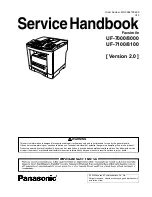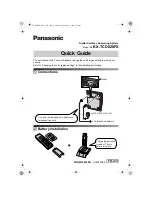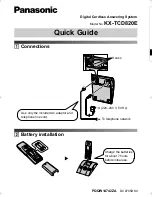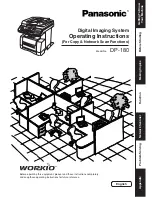
T-8421C, 8422C, 8452C, 8722C, 8752C
13. STANDARD ADJUSTMENT
69
13-7. Needle and rotary hook timing
1. Set the stitch length dial to the actual length of the stitches
to be sewn.
Standard stitch length
Specifications Stitch length dial
-T[]F 2
-[][]3 2
-405, -407
3
2. Remove the rubber cap (1).
3. Loosen the screw (5) and move the needle bar (2) up or
down to adjust so that the top reference line (3) on the
needle bar (2) is aligned with the bottom edge of the
needle bar bracket (4) when the needle bar (2) is at its
lowest position.
(Be careful not to turn the needle bar (2) at this time.)
4. Securely tighten the screw (5).
5. At this time, the gaps (A) and (B) between the needle (6)
and the front of the feed dog (7) should be about the
same as each other.
6. Turn the machine pulley forward to raise the needle bar
(2) until the reference line ((8) or (9), depending on the
feed condition) on the needle bar (2) is aligned with the
bottom edge of the needle bar base (4).
7. In this condition, secure the machine pulley with tape or
similar, so that the needle bar (2) will not move.
The procedure up to this point determines the needle bar lift
amount.
NOTE:
If the needle bar lift amount is too large
• It will cause poor tightening in the right thread.
• Both the left and right seams will become uneven, and
skipped stitches or thread breakages will occur.
• Upper thread trimming errors may occur, or the upper
thread may be cut too short (models with thread trimmer).
• The upper thread trailing length will be too long (models
with thread trimmer).
If the needle bar lift amount is too small
• Skipped stitches and thread breakages will occur.
• The upper thread trailing length will be too short (models
with thread trimmer).
2203B
Needle bar lowest position
3040M
Lower feed
Needle feed
















































